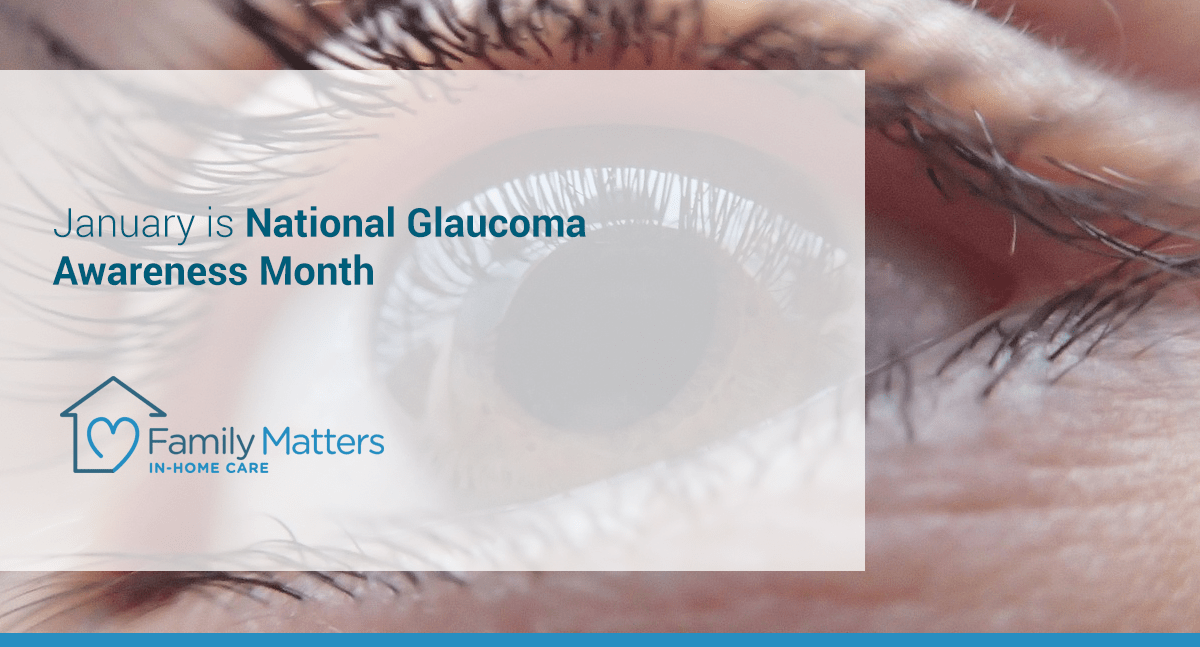
January is National Glaucoma Awareness Month
January is National Glaucoma Awareness Month and for good reason. Glaucoma is the second leading cause of irreversible blindness around the world. It is also the leading cause of blindness for seniors over the age of 64 in the United States. Glaucoma is often called the “Silent Thief of Sight” because it has no early symptoms. In fact, only regular, thorough eye exams can detect the vision-stealing eye disease.
Glaucoma is one of the most common chronic eye diseases for seniors. Statistics1 show that the disease robs the sight of millions of people.
- It is estimated that over three million Americans have glaucoma but only half of those know they have it.
- In the U.S., more than 120,000 are blind from glaucoma, accounting for 9% to 12% of all cases of blindness.
- After cataracts, glaucoma is the leading cause of blindness among African Americans. (1)
- Blindness from glaucoma is 6 to 8 times more common in African Americans than Caucasians.
Glaucoma damages the eye’s optic nerve as fluid builds up in the front part of the eye. The fluid increases pressure in the eye and damages the nerve.
Types of glaucoma
There are two types of glaucoma; primary open-angle glaucoma and angle-closure glaucoma. It’s important to understand the differences between the two because one requires emergency care. The two types of glaucoma are:
- Primary open-angle glaucoma: This is the most common type of the disease. It happens gradually and is painless. In its early stages this type of glaucoma causes no vision changes.
- Angle-closure glaucoma: This type of glaucoma occurs when fluid cannot drain from the eye. As a result, pressure in the eye rises very quickly causing an acute attack of the disease.
An attack of angle-closure glaucoma can cause various symptoms including:
- Sudden blurry eyesight
- Severe eye pain
- Headache
- Nausea
- See rainbow colored rings or halos around lights
If this occurs it is an emergency and should be treated as such or blindness may result. No symptoms occur before an attack of angle-closure glaucoma.
Risk factors for glaucoma
There are many different risk factors for glaucoma. They include:
- Being over the age of 40
- Family members with glaucoma
- African or Hispanic heritage
- Diagnosed with high eye pressure
- Are farsighted or nearsighted
- Have had an eye injury
- Have corneas that are thin in the center or a thinning of the optic nerve
- Have diabetes, migraines, poor blood circulation or other health problems affecting the whole body
How doctors diagnose glaucoma
Regular eye exams by an ophthalmologist are the only way to detect the signs and symptoms of glaucoma. An ophthalmologist will measure eye pressure, inspect how the eye drains fluid, and examine the optic nerve. These and other tests are the best, and only way, to determine if you are at risk for the disease.
Treatments for glaucoma
Unfortunately, there is no cure for Glaucoma. Once the disease has damaged vision there is no way to reverse it. However, there are treatments that can slow the disease and perhaps, prevent further damage from occurring. Some of these include:
- Eye drops: Used daily, these can lower eye pressure by reducing the amount of fluid that they eye makes.
- Laser surgery: These procedures can improve the drainage angle in the eye, helping it to remove fluid and avoid pressure build up.
- Other surgical treatments may be available, including those that implant drainage tubes and/or create new drainage channels in the eye.
Although glaucoma has no warning signs, annual eye exams can help to detect it early, when treatment can be most successful. Remember to pay attention to eye health and get regular eye exams. If you are at risk for glaucoma it is especially important to do so.
If you or your family member is considering in-home care as part of a plan to age in place, contact Family Matters In-Home Care today for a free consultation. Our team is dedicated to supporting your family and helping older adults enjoy life in the comfort of their own home for as long as possible.
Some of the services offered by Family Matter In-Home Care include: Alzheimer’s & Dementia Care, Bed & Wheelchair Transfer Assistance, Companionship, Housekeeping & Meal Preparation, Personal Care, Recovery Care, and Transportation.
Serving the San Francisco Bay Area and Greater San Diego, Family Matter In-Home Care has offices throughout California including: Campbell, CA, Roseville, CA, San Marcos, CA, and San Mateo, CA.
Sources/References:
- https://www.glaucoma.org/glaucoma/glaucoma-facts-and-stats.php
